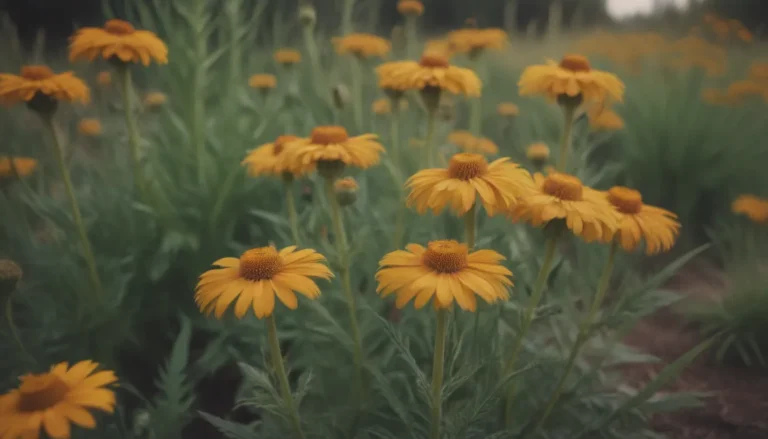How to Successfully Grow Hosta (Plantain Lily) Indoors

Hostas are truly delightful plants with their lush green foliage and beautiful colors. While they are traditionally grown outdoors, these shade-loving perennial plants can also thrive as houseplants if given the proper care and conditions. In this comprehensive guide, we will delve into everything you need to know to grow hostas indoors successfully.
Benefits of Growing Hosta Indoors
When you choose to grow hostas indoors, you’ll find that they bring many benefits to your indoor environment. Here are some reasons why growing hostas indoors can be a rewarding experience:
- Less susceptible to pests and diseases: Indoor hostas are generally less prone to pest infestations and diseases compared to outdoor plants.
- Year-round beauty: Enjoy the lush green foliage and vibrant colors of hostas all year long, regardless of the season.
- Space flexibility: Hostas come in a wide range of sizes, making it easy to find a variety that fits perfectly in your indoor space.
- Educational opportunity: Growing hostas indoors provides a unique opportunity to learn more about plant care and cultivation.
Can You Grow Hosta Inside?
Yes, you can definitely grow hostas indoors with the right conditions. While hostas are not commonly grown as houseplants, they can thrive indoors when given the proper care. Here are some key points to consider when growing hostas indoors:
- Dormancy period: Hostas require an annual dormancy period of at least six weeks at temperatures below 42 degrees Fahrenheit. This can be achieved by over-wintering the plants in a garage, outdoors, or in a refrigerator.
- Variety selection: Choose hosta varieties with thicker, glossier leaves for better indoor growth. Some suitable varieties include ‘Frosted Mouse Ears’, ‘Cracker Crumbs’, ‘El Nino’, ‘Sunshine Glory’, and ‘Sum and Substance’.
- Light requirements: Hostas are shade-loving plants, but they still need some filtered light. Green-leaved varieties can tolerate deep shade, while variegated and yellow-leaved hostas prefer part sun.
How to Successfully Grow Hosta Indoors
Sunlight
Hostas thrive in shaded conditions, making them ideal for indoor environments with limited light. Here are some tips for providing the right amount of sunlight for your indoor hostas:
- Green-leaved varieties: These hostas are the most tolerant of deep shade and can thrive in low-light conditions.
- Variegated varieties: Prefer part sun, receiving three to four hours of sunlight each day.
- Yellow-leaved varieties: Can handle up to six hours of direct sunlight but should still be protected from harsh midday sun.
Temperature and Humidity
Hostas are relatively easygoing when it comes to temperature and humidity. Here are some guidelines for maintaining ideal conditions for your indoor hostas:
- Temperature: Hostas will thrive in the ambient temperature of your home, as long as they receive the required dormancy period below 42 degrees Fahrenheit.
- Humidity: Indoor hostas are not overly picky about humidity levels and should do well in the average indoor environment.
Watering
Proper watering is essential for the health of your indoor hostas. Here are some watering tips to keep your plants happy:
- Frequency: Hostas grown in containers need frequent watering to keep the soil moist. Water them whenever the top inch of soil feels dry.
- Drainage: Ensure that your pots have proper drainage to prevent waterlogged soil, as hostas prefer moist but well-drained conditions.
Fertilizer
Feeding your indoor hostas with the right nutrients is crucial for their growth and health. Here’s how to fertilize your plants effectively:
- Slow-release fertilizer: Use a slow-release fertilizer at the beginning of the growing season to provide long-lasting nutrients.
- Water-soluble fertilizer: Continue to fertilize hostas every other week with a water-soluble fertilizer to support their growth.
- Container-grown hostas: These plants may need slightly more fertilizer due to nutrient loss from frequent watering.
Pruning and Maintenance
Hostas are low-maintenance plants, but they still require some care to thrive indoors. Here are some tips for pruning and maintaining your indoor hostas:
- Leaf removal: Wilted or yellowing leaves can be removed as needed to keep the plant looking tidy.
- Flower removal: If your hosta produces flowers, remove them after blooming to redirect energy towards foliage growth.
Container Selection and Care
Choosing the right container for your hostas is key to their success as indoor plants. Here’s how to select and care for containers for your hostas:
- Size: Select a container that is at least as wide as the expected foliage mound of your hosta variety, typically between 12 and 18 inches.
- Drainage: Ensure that your pots have drainage holes to prevent waterlogging, which can lead to root rot.
- Potting mix: Use a well-drained commercial potting mix specifically designed for container-grown plants to provide optimal growing conditions.
Moving Hostas Outdoors for the Summer
While hostas can thrive indoors, many growers choose to move them outdoors during the summer months for a change of scenery. Here are some considerations for moving your hostas outdoors:
- Timing: Early spring is a good time to move your hostas outdoors, as the spring rains can help keep the soil moist.
- Temperature considerations: Ensure that outdoor temperatures remain above 42 degrees Fahrenheit before moving actively growing hostas outside.
- Returning indoors: Hostas can withstand cold temperatures, so you can bring them back indoors before the onset of winter to protect them from harsh conditions.
By following these tips and guidelines, you can successfully grow hostas indoors and enjoy their beauty year-round. Whether you’re a seasoned gardener or a beginner, cultivating hostas as houseplants can be a rewarding and educational experience. So, bring some greenery into your home with these lovely shade-loving plants!





